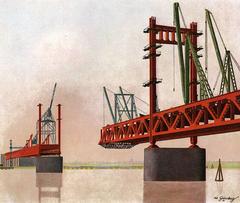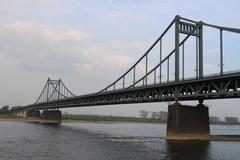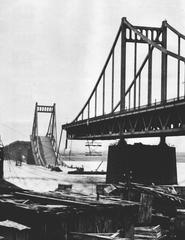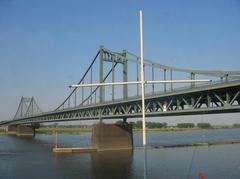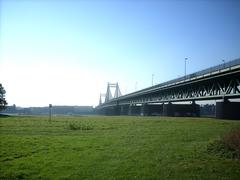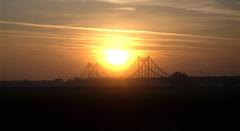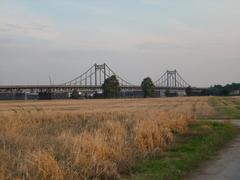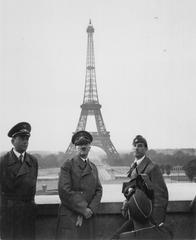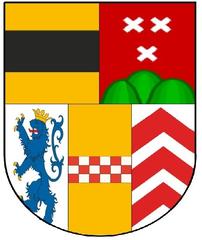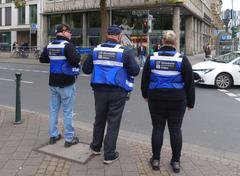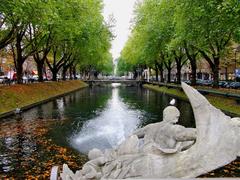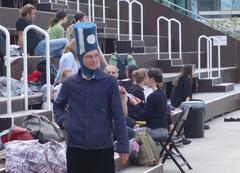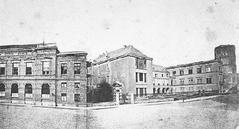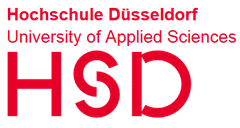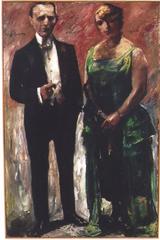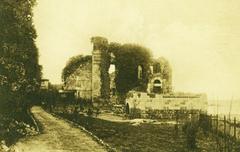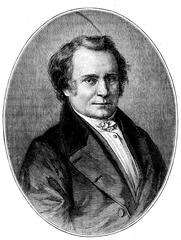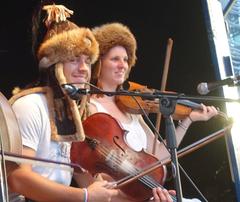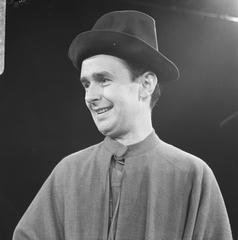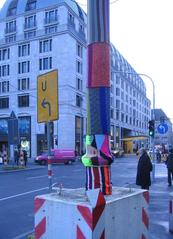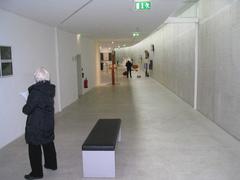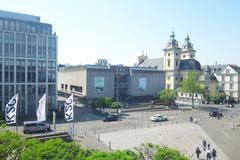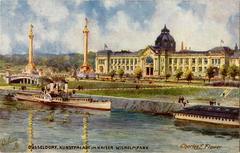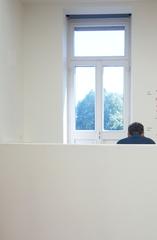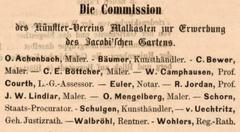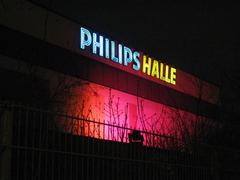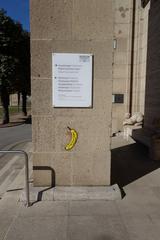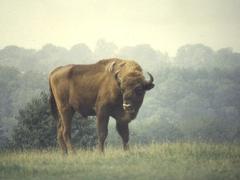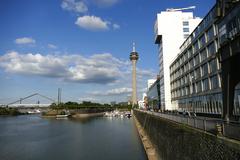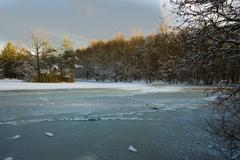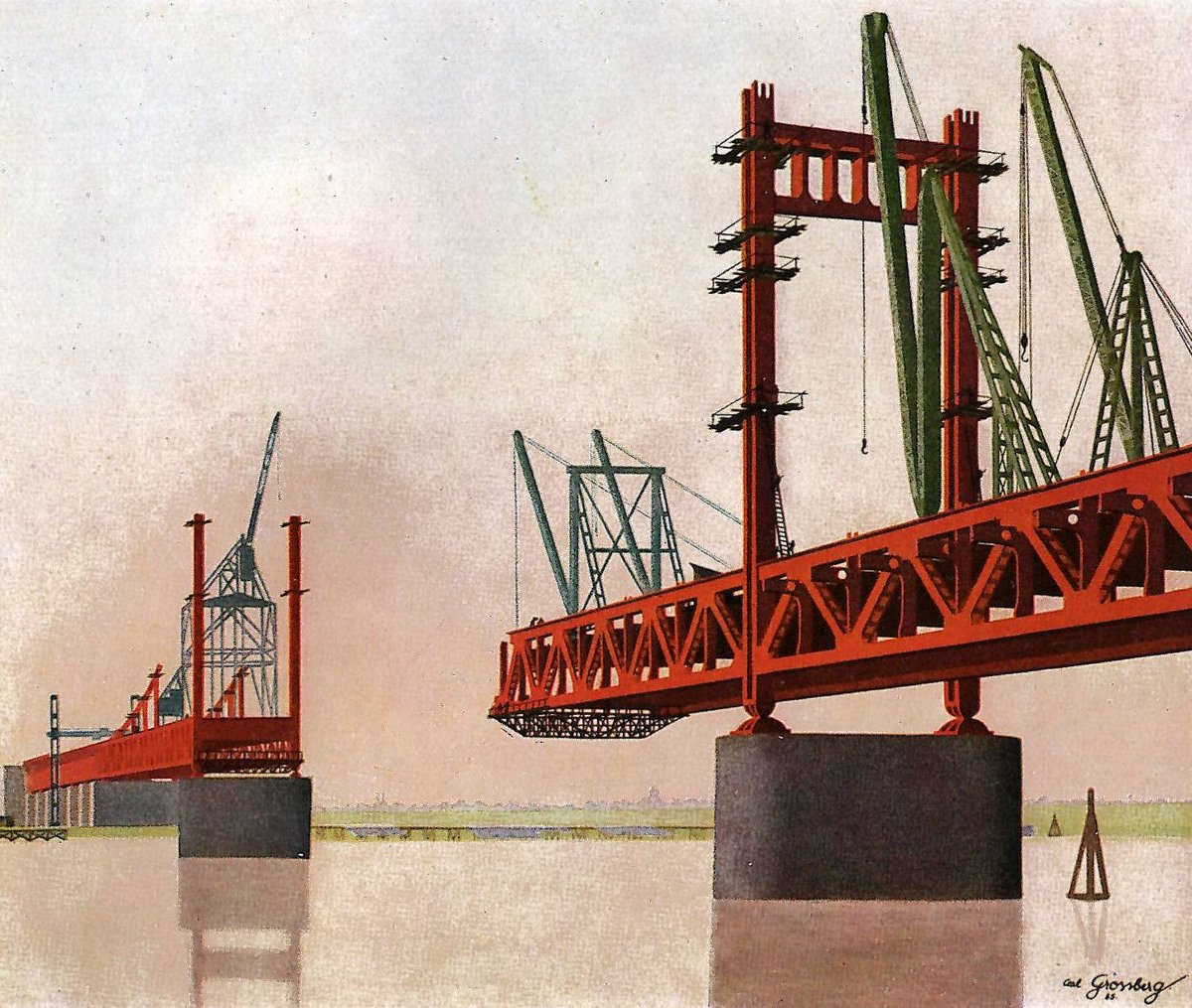
Comprehensive Guide to Visiting Krefeld-Uerdinger Brücke, Düsseldorf, Germany
Date: 31/07/2024
Introduction
The Krefeld-Uerdinger Brücke, an iconic structure spanning the Rhine River in Krefeld, Germany, is more than just a bridge; it is a testament to human ingenuity, resilience, and history. This guide aims to provide a comprehensive exploration of the bridge, delving into its storied past, architectural marvels, and practical visitor information. From its inception in the early 20th century as part of an economic recovery effort to its destruction during World War II and subsequent reconstruction, the Krefeld-Uerdinger Brücke has played a pivotal role in the region’s history (WZ). Today, it stands not only as a functional crossing but also as a cultural landmark that attracts tourists and locals alike. This guide will cover everything you need to know for a memorable visit, including historical context, visitor tips, and nearby attractions.
Table of Contents
- Introduction
- Historical Background
- Visitor Information
- Cultural Significance and Events
- Nearby Attractions
- FAQ
- Conclusion
Historical Background
Early Conception and Construction
The Krefeld-Uerdinger Brücke, a vital crossing over the Rhine River, has a storied history that dates back to the early 20th century. The initial plans for the bridge were conceived in the early 1930s, during a period of significant economic hardship in Germany. The construction of the bridge was part of a broader initiative aimed at combating mass unemployment, which had reached alarming levels of 20 to 25 percent in Krefeld (WZ).
The groundbreaking ceremony took place on October 29, 1933, marking the beginning of a massive construction project that would employ up to 1,000 workers. The bridge was officially inaugurated in 1936 and was initially named the ‘Adolf-Hitler-Brücke,’ reflecting the extensive Nazi propaganda that accompanied its construction (WZ).
World War II and Destruction
The strategic importance of the Krefeld-Uerdinger Brücke became evident during World War II. By early March 1945, as Allied forces advanced, the bridge was a focal point of intense military activity. The city of Krefeld itself held little strategic value, but the bridge was crucial for troop movements and logistics. Consequently, it became the target of concentrated artillery fire from American forces, who aimed to prevent its use by the retreating German army (WZ).
In a final act of desperation, the Wehrmacht destroyed the bridge in March 1945 to hinder the Allied advance. The demolition was executed by detonating a truck loaded with explosives in the middle of the bridge, effectively severing this critical crossing point over the Rhine (WZ).
Post-War Reconstruction
The aftermath of World War II left Germany in ruins, and the Krefeld-Uerdinger Brücke was no exception. Recognizing its importance, reconstruction efforts began in 1948 using the original construction plans and materials. The bridge was successfully reopened on November 4, 1950, by CDU Minister-President Karl Arnold, who hailed it as a ‘symbol of the reconstruction of the Lower Rhine’ (WZ).
Modern Enhancements and Challenges
Over the decades, the Krefeld-Uerdinger Brücke has undergone several enhancements to meet the demands of modern traffic. In 1964, measures were taken to increase its load-bearing capacity. Between 1984 and 1993, the bridge underwent extensive renovations costing ten million Deutsche Marks to ensure its structural integrity and safety (WZ).
However, the bridge has not been without its challenges. In 2019, a routine inspection by Straßen.NRW revealed significant damage to the concrete roadway slabs, leading to restrictions on heavy vehicles over 7.5 tons until initial repairs could be completed (WZ).
Future Prospects
The future of the Krefeld-Uerdinger Brücke remains uncertain. In July 2023, NRW Transport Minister Oliver Krischer assessed the bridge’s condition, and it was still unclear whether the old structure would need to be demolished or could be preserved for pedestrian and cyclist use. Straßen.NRW has indicated that a new bridge is necessary for vehicular traffic due to the deteriorating condition of the existing structure. Construction of the new bridge is expected to commence in the early 2030s (WZ).
Visitor Information
Visiting Hours and Tickets
The Krefeld-Uerdinger Brücke is accessible to the public year-round. There is no entry fee to visit the bridge itself. For those who wish to participate in guided tours or special events, tickets can be purchased through the official Krefeld tourism website or at the visitor center located near the bridge.
Accessibility and Visitor Experience
Accessibility has been a key consideration in the design of the Krefeld-Uerdinger Brücke. The bridge features ramps and elevators to facilitate access for people with disabilities. Braille signage and audio guides are available to assist visually impaired visitors, and reserved parking spaces are provided for disabled individuals (InGermany).
For those visiting by public transport, the bridge is conveniently accessible via the U76 or U79 tram lines, as well as bus lines 925 and 941. For drivers, the A57 motorway provides easy access, with ample parking available nearby (InGermany).
Architectural and Technical Features
The Krefeld-Uerdinger Brücke is a remarkable example of modern engineering and design. Its sleek, minimalist aesthetic is characterized by clean lines and geometric shapes, with slender steel arches supporting the deck. This design not only provides structural integrity but also creates a sense of lightness and airiness (InGermany).
Spanning 837 meters across the Rhine, the bridge is one of Germany’s longest. It comprises 12 spans, each approximately 67 meters long. The primary framework consists of steel beams, while concrete is used for the deck and piers, ensuring durability and resilience against the elements (InGermany).
Cultural Significance and Events
The Krefeld-Uerdinger Brücke is not just a functional structure but also a cultural landmark. It offers breathtaking panoramic views of Krefeld and its surroundings, including the Rhine River, lush green parks, and industrial landmarks that highlight the city’s rich heritage (InGermany).
The bridge also plays a central role in local festivities. The annual ‘Brückentag’ (Bridge Day) transforms the bridge into a vibrant stage for music, art, and cultural performances, attracting locals and tourists alike (InGermany).
Nearby Attractions
Visitors to the Krefeld-Uerdinger Brücke can explore a variety of nearby attractions. The Krefeld Zoo, home to over 1,000 animals, is just a short walk away. Other notable sites include the historic St. Dionysius Church, known for its impressive stained glass windows, and the Altes Rathaus Uerdingen (Old Town Hall), a remarkable historical landmark dating back to the 15th century (InGermany).
FAQ
What are the visiting hours for Krefeld-Uerdinger Brücke?
The bridge is accessible to the public year-round.
How much do tickets cost to visit the Krefeld-Uerdinger Brücke?
There is no entry fee to visit the bridge itself. Tickets for guided tours or special events can be purchased through the official Krefeld tourism website or at the visitor center.
Are there guided tours available?
Yes, guided tours are available and can be booked through the official Krefeld tourism website.
Conclusion
The Krefeld-Uerdinger Brücke stands as a testament to the resilience and ingenuity of the people of Krefeld. From its initial construction during a period of economic hardship to its destruction and subsequent reconstruction, the bridge has played a pivotal role in the city’s history. As it faces new challenges and potential future developments, the bridge continues to be a symbol of Krefeld’s enduring spirit and cultural heritage.
Call to Action
Planning your visit to the Krefeld-Uerdinger Brücke? Download our Audiala app for more updates and information on historical sites in Krefeld. Don’t forget to follow us on social media!
References
- WZ. (n.d.). Das ist die Geschichte der Rheinbrücke in Krefeld-Uerdingen. Retrieved from WZ
- InGermany. (n.d.). Krefeld-Uerdinger Brücke. Retrieved from InGermany
- Deutsche Bahn. (n.d.). Official Website. Retrieved from Deutsche Bahn website
- Rheinische Industriekultur. (n.d.). Rheinbrücke. Retrieved from Rheinische Industriekultur
- Krefeld. (n.d.). Official Tourism Website. Retrieved from Krefeld tourism website
- Komoot. (n.d.). Greiffenhorstpark. Retrieved from Komoot
